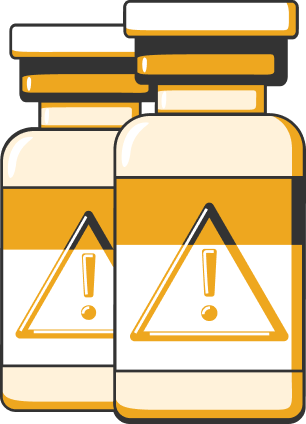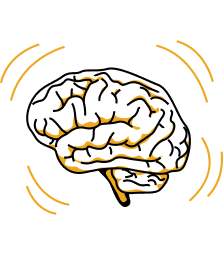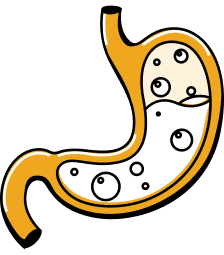- Home
Sermorelin Side Effects You Should Know About
Are you considering Sermorelin but curious about its potential side effects? Exploring hormone therapy requires understanding not just the benefits but also things that can go wrong. In this blog post, we will list Sermorelin's side effects to help you make the right decision regarding your health and well-being. Let's explore these side effects and how they might affect your journey toward recovery.

Injection Site Reactions
Individuals undergoing Sermorelin therapy may experience various reactions at the injection site, including pain, redness, swelling, itching, and sensitivity. These responses are typically localized to the area where the peptide is administered. While mild discomfort and inflammation are common, severe, or persistent symptoms should be promptly reported to a healthcare provider for evaluation and management.
How to manage: To manage injection site reactions, individuals can apply a cold compress to reduce swelling and discomfort. Rotating injection sites can help minimize local irritation. If symptoms persist or worsen, seeking medical advice is recommended to explore alternative administration techniques or address potential allergic reactions.

Some individuals receiving Sermorelin therapy may encounter challenges or discomfort in swallowing. This side effect, albeit less frequent, can range from mild to more pronounced difficulties in swallowing. Monitoring any changes in swallowing patterns and communicating them to a healthcare professional is crucial to determining appropriate interventions and ensuring patient comfort.
How to manage: People having trouble swallowing while on Sermorelin therapy should inform their healthcare provider immediately. Adjusting the timing of the peptide administration around meals and fluids may alleviate swallowing issues. In severe cases, further evaluation may be necessary to ensure proper management.

Dizziness can be a side effect of Sermorelin therapy. It is essential for individuals experiencing dizziness to exercise caution, especially when engaging in activities that require focus or coordination. Persistent or severe dizziness warrants medical attention to assess its potential causes and implement suitable measures.
How to Manage: Managing dizziness involves avoiding sudden movements and staying hydrated to maintain blood pressure stability. If dizziness persists or is severe, individuals should refrain from driving or operating machinery and consult a healthcare provider for a thorough assessment and guidance on managing this side effect effectively.

Flushing, manifested as redness in the facial or neck region, is a common side effect associated with Sermorelin therapy. At the same time, typically transient and benign, persistent or intense flushing may indicate an individual's response to the treatment. Monitoring the frequency and severity of flushing episodes can aid in determining the appropriate therapy regimen.
How to manage: Individuals can avoid triggers like hot beverages or spicy foods to address flushing episodes. Maintaining a cool environment and staying hydrated can help reduce facial redness. If flushing is frequent or severe, consulting a healthcare provider for further evaluation and potential adjustments to the treatment plan is recommended.

Headaches are recognized as a prevalent side effect of Sermorelin therapy. Patients undergoing this treatment may experience varying degrees of head pain or discomfort. Monitoring the onset, duration, and intensity of headaches is essential to gauge their impact on daily functioning and overall well-being.
How to manage: Managing headaches involves proper hydration, maintaining consistent sleep patterns, and practicing stress-reducing techniques. Over-the-counter pain relievers may offer temporary relief for mild headaches. Persistent or severe headaches warrant medical evaluation to determine appropriate interventions and ensure optimal symptom management.

Nausea, characterized by feelings of sickness or the urge to vomit, can manifest as a side effect of Sermorelin therapy.
How to manage: Managing nausea involves assessing dietary habits, medication compatibility, and potential underlying causes. Individuals experiencing persistent or severe nausea should seek medical advice to address this symptom and ensure continued treatment compliance. They can benefit from eating small, bland meals and avoiding strong odors. Ginger supplements or teas may help alleviate nausea symptoms.

A rash, presenting as a skin eruption or irritation, is another potential side effect of Sermorelin therapy. Skin changes such as redness, itchiness, or rash formation may indicate an individual's reaction to the peptide. Prompt evaluation by a healthcare provider is recommended to determine the nature of the rash, its severity, and the appropriate course of action to alleviate discomfort and prevent further skin reactions.
How to manage: Managing rash involves keeping the affected area clean and dry. Calamine lotion or gentle moisturizers can soothe irritated skin. If the rash spreads or intensifies, seeking medical guidance is crucial to identify potential allergens or irritants and determine the most appropriate treatment approach to promote skin healing and comfort.

Experiencing increased sleepiness, characterized by excessive drowsiness, or feeling overly tired, can be a side effect of Sermorelin therapy. Monitoring changes in sleep patterns, energy levels, and daytime alertness is vital to assess the impact of treatment on overall quality of life.
How to manage: Addressing increased sleepiness requires maintaining a consistent sleep schedule and avoiding stimulants close to bedtime. Engaging in regular physical activity can promote wakefulness and combat daytime drowsiness. If excessive sleepiness persists despite lifestyle adjustments, consulting a healthcare provider for further assessment and tailored recommendations is essential.

Alterations in the sense of taste may arise in individuals undergoing Sermorelin therapy. Changes in taste perception can affect how food and beverages are experienced, potentially influencing dietary preferences and nutritional intake.
How to manage: Coping with taste changes involves experimenting with different flavors and textures to enhance meal enjoyment. Maintaining good oral hygiene can help minimize any unpleasant taste. Persistent taste alterations should be discussed with a healthcare provider to rule out underlying causes and effectively explore strategies to mitigate this side effect.
